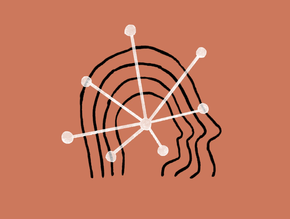Infosys: The Future of AI within Corporate Communication

With AI use continuing to rise among numerous key industries, it is clear that plenty of businesses are excited to work towards more comprehensive digital transformation strategies.
With this in mind, we speak with Sreekanth Sasidharan, Associate Vice President & Unit Technology Officer, Engineering Services at Infosys, about unified communications (UC) and how businesses can harness AI to improve digital experiences.
With more than 25 years of experience in network, communication and AI technology, Sasidharan views UC as a solution for powering next-generation digital experiences and how it is crucial for the future of work, particularly within hybrid and remote working patterns.
How do you see the digital workplace evolving?
The year 2023 ended without settling the tug-of-war between ‘work from home’ (WFH) and ‘return to office’ (RTO). Consequently, through 2024, workforces will continue operating on flexible, distributed, and hybrid models – multi-locational teams are expected to carry on working, anytime, anywhere, on any device.
In an age defined by tech adoption, digital transformation, agility, and always-on interactions, the onus is greater on cross-functional teams to be able to quickly innovate and tailor their responses to elevate the overall customer experience.
Therefore, from the employee and customer perspective, the crux of next-generation digital experiences is unbroken connectivity and novelty in communicating, collaborating and sharing knowledge across channels and devices without a hitch.
What is UC and why is it important?
Digital experiences need improving on multiple fronts including efficiency, use of data and quality of engagement with employees and customers. Plus, with the advent of ubiquitous networks, virtual collaboration from anywhere in the world has become a norm.
These needs, in turn, feed the demand for UC, which aims to provide a collaborative environment for audio/video conferencing, individual calls, messaging, document sharing and more. At the same time, many UC platforms ensure these features are readily integrated with emails and calendars to manage and schedule meetings, which mostly happen on the cloud these days.
As a tool for better communication among employees and audience engagement, UC effectively brings together people and integrates well with the wide variety of channels and communication tools that come into play in modern-day conferencing and conversations. However, with the increased demand for efficiency and experience in collaboration, UC must adopt AI and newer channels of experience like the Metaverse.
Why do you believe that UC must evolve in line with AI?
The march of AI and its possible role in the future of UC for organisations cannot be discounted. Collaboration solutions must evolve to leverage the vast amounts of data better so that the interactions can be insight-driven and personalised. This can happen with greater uptake of AI and generative AI in UC, especially in how data is pieced together into meaningful insight.
The data in the context of UC can be used and analysed in multiple ways. One is to use data about a specific conversation to study and determine its impact, for example, understanding the sentiment or extracting the context of the conversation through keywords.
The second is, using speech-to-text translation and generating data that can be used for multiple use cases, such as, generating live meeting minutes of conference calls as ready-to-use documents, analysing meeting participation or effectiveness.
Another possibility is the conversion of bilingual/multilingual interactions into a commonly understood language, such as English, and providing closed captions between all sides of a conversation so that all the stakeholders can understand the nuances better.
The third angle is to use data originating from the network layer or the underlying technology layer to bring about self-healing, self-adjusting improvements to the end-user experience.
To make all the above work together, organisations must have a common data pool which feeds into all the channels of digital experiences such as video, audio, unified communication, social media handles as well as web pages and portals, and all of these should tie back their data using a digital brain of sorts. This will facilitate cross enablement of data and better correlations. For instance, while presenting to customers, the presenter can search on an AI-driven chat window and get key information quickly and incorporate and personalise it in the conversation.
How can UC be used in conjunction with new digital transformations (ie. the metaverse)?
As UC evolves, it also requires integration with omni channels so that data can be fetched back and forth to improve the experience. The metaverse and hologram technologies offer great promise as its future unfolds.
At present, conferencing in meetings includes audio and video features. The next generation unified communication demands telepresence and immersive experience. This is where the metaverse enabled by hologram technology comes in. For example, a virtual room can be created for all participants who are in different physical locations with the provision for some to appear on video/audio while others participate as a hologram/avatar.
Another exciting area being explored is using an interactive hologram that serves as a virtual assistant or a generative AI-based interface wherein a human interacts with an avatar.
How do you see the future of UC evolving?
From an organisation standpoint, unified communications can be a standalone platform or consumed as a service (UCaaS) to which they subscribe. In either case, it is a strategic necessity for next-generation digital experiences.
Projected to reach US$44.68bn in 2024, UCaaS is expected to continue its impressive growth to potentially US$139.94bn by 2029, according to Mordor Intelligence.
Replete with scalable and customisable solutions and a future-proof framework, UC will have considerable sway in corporate communications, innovation, and sustained competitiveness for organisations. It is the much-needed catalyst for organisations looking to redefine and mould themselves to suit the evolving business landscape.
************
Make sure you check out the latest edition of AI Magazine and also sign up to our global conference series - Tech & AI LIVE 2024
************
AI Magazine is a BizClik brand






